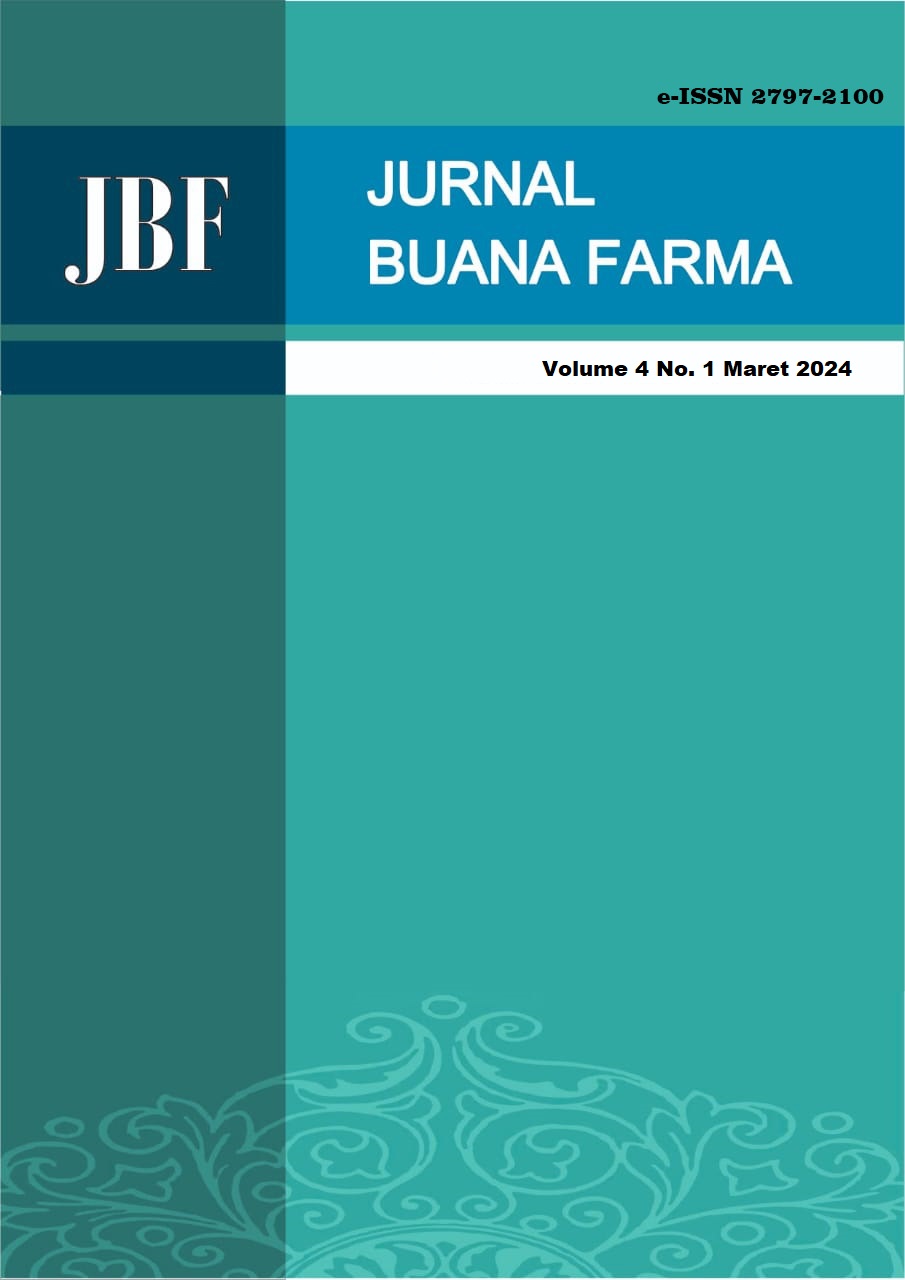PENGARUH BUDAYA ORGANISASI INSTALASI FARMASI TERHADAP KUALITAS PELAYANAN DALAM MENINGKATKAN KEPERCAYAAN DAN KEPUASAN PASIEN RAWAT JALAN DI RUMAH SAKIT SWASTA CIKAMPEK
Abstract
The availability of medicines, long waiting times and the attitude of staff in prescription services often cause patient dissatisfaction, so a study is needed on the factors that influence whether or not an organization is effective in achieving its goals, especially in pharmacy installations. There are four variables in this research, namely one independent variable and three dependent variables. The instrument used in the Organizational Culture variable is to measure interpersonal relationships between organizational members and understanding of organizational tasks. Service quality uses the 5Q model method, customer trust is generally conceptualized in 5 dimensions while customer satisfaction uses the SERVQUAL method. 100 employees and customers of pharmaceutical installations each became participants in this study, using the partial least squares technique to test the hypothesized relationship. The study results show that organizational culture has a positive effect on service quality (t-statistic value 5.2189 > t table 1.96), Service Quality has a positive effect on increasing Customer Trust (t-statistic value 13.2489 > t table 1.96). Service Quality has a positive effect on increasing Customer Satisfaction (t-statistic value 6.4256 > t table 1.96) and Customer Trust has a positive effect on Customer Satisfaction (t-statistic value 4.1696 > t table 1.96). The results of this research show that the performance of services provided by private hospitals in Cikampek can generally meet patient expectations in terms of quality of service processes, quality of objects, infrastructure, interactions and atmosphere.
References
Angga R., (2016): Rumah Sakit Pemerintah sebagai sebuah Organisasi : Stuktur, Manajemen dan Pengembangan, https://www.researchgate.net/publication/ 289674821, Universitas Padjajaran
Akfian Yuda Adhi dan Nina Ernawati. (2012): Pengaruh Dimensi KualitasPelayanan dan Kepercayaan Konsumen Terhadap Kepuasan Konsumen Hotel Candi Indah Semarang. Jurnal Mahasiswa Q-MAN, Volume I, No. 3, Mei 2012, halaman 44-56.
Boan D., dan Funderburk F. (2003): Healthcare Quality Improvement and Organizational Culture, Executive Summary, Delmarva Foundation.
Fakhar et.al. (2012): Impact of Organizational Culture on Organizational Performance: An Over View, Interdisciplinary Journal of Contemporary Research in Business, Vol. 3, No. 9,pp 975-985.
Kumar, P.N., Jacob, A., Thota, S. (2014): Impact of healthcare marketing and branding on hospital services, International Journal of Research Foundation of Hospital & Healthcare Administration, 2 (1):19- 24.
Macintosh, Eric., (2010): Cross-sectoral Variation in Organizational Culture in Fitness Industry, University of Florida, Routledge
Martinez, p., dan Bosque, R.D. (2013): CSR and loyalty: The role of trust, customer identification with company and satisfaction, International Journal of Hospitality Management vol.35: 89– 99.
Munusamy Jayaraman, Shankar Chelliah dan Hor Wai Mun. (2010): Service Quality Delivery and Its Impact on Customer Satisfaction in the Banking Sector in Malaysia, International Journal of Innovation, Management and Technology, Vol. 1, No. 4, October 2010.
Naoto Ukawa dan Masayuki Tanaka (2015): Organizational culture affecting quality of care : guideline adherence in perioperative antibiotic use, International Journal for Quality in Health Care, 27 (1), 37-45
Phung Tan Lee, (2014): Evaluation of Public Hospital Performance in Khan Hoa Province – Vietnam in Connection with Patient And Staff Satisfaction Surveys, Queensland University of Technology.
Sayed N.H.,dan Shams UR., (2012): Patient Satisfaction regarding hospital services : A Study of UMEA Hospital, UMEA Universitat, p. 8, Swedia.
Sekaran, U. (2006): Metode Penelitian untuk Bisnis I ., Edisi ke empat, : Salemba Empat, hal. 18, Jakarta.
Yunus NKY. Relationship Between Occupational Stress and Job Satisfaction: An Empirical Study in Malaysia. Romanian Economic Journal. 2009;12(34)













